Last-Minute NYC Holiday Gift Guide 🎁
We’ve created a holiday gift guide with presents for the intrepid New Yorker that should arrive just in time—

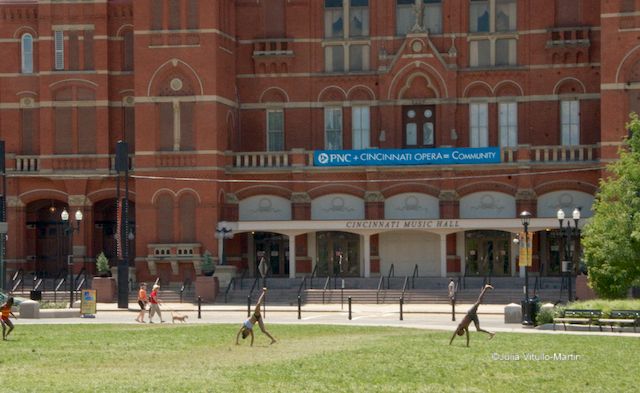
Can the rehabilitation of a great public space restore its surrounding blocks? We know it has in New York City, where we’ve seen Bryant Park help restore Midtown, Prospect Park restore Park Slope and Prospect Heights, and Staten Island’s Greenbelt restore huge swaths of the borough. Cincinnati’s Washington Park may be the country’s most notable urban park makeover since New York saved Central Park in the 1980s. With immense drive and determination Cincinnati successfully deployed the park rescue toolkit invented by New Yorkers: fill the park with good uses and displace the bad uses, keep the territory clean and orderly, maintain a friendly but obvious police presence, and make everything as beautiful as possible. Plus Cincy added its own local touches, such as lovely Rookwood Pottery tiles at each entrance.
And while Central Park’s rescue is more famous, Washington Park’s resuscitation came from a far more dismal base of rampant physical neglect combined with blatant public drug use. The park was so shockingly dangerous that it attracted the attention of the New Yorker, which ran an Annals of Crime column in 2009 on its routine murderous violence. That same year Washington Park’s surrounding Over-the-Rhine neighborhood (OTR) was named the most dangerous in America.
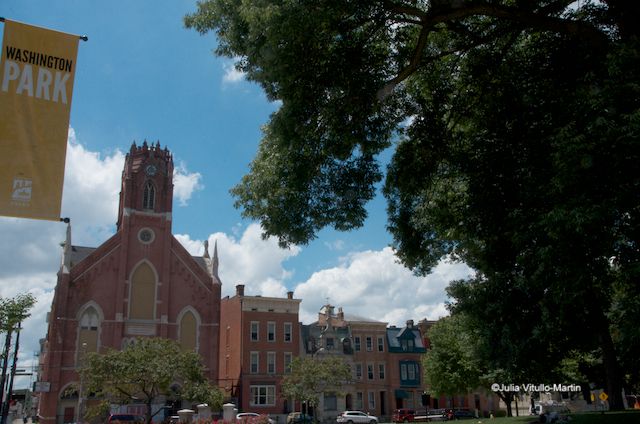
Ironically, with its extraordinary collection of 19th-century Italianate and Greek Revival buildings recognized by the National Register of Historic Places, OTR has also long been one of the most beautiful neighborhoods in America. It’s the kind of neighborhood New Urbanists dream of. Compact, bikable, and walkable, it was created by German immigrants who made their way to work across the bridges over the canals separating OTR from downtown Cincinnati, which is itself undergoing a remarkable resurgence. The immigrants not only built handsome residences but also elaborate churches and lavish public buildings, including the Music Hall overlooking the western border of Washington Park and Findlay Market, three blocks to the park’s north. Yet in 2001 Over-the-Rhine became the site of Cincinnati’s notorious riots, the country’s worst since the Los Angeles riots of 1992. Reason Magazine‘s Sam Staley called OTR “ground zero in inner-city decline,” and offered a prognosis that basically nothing could be done.
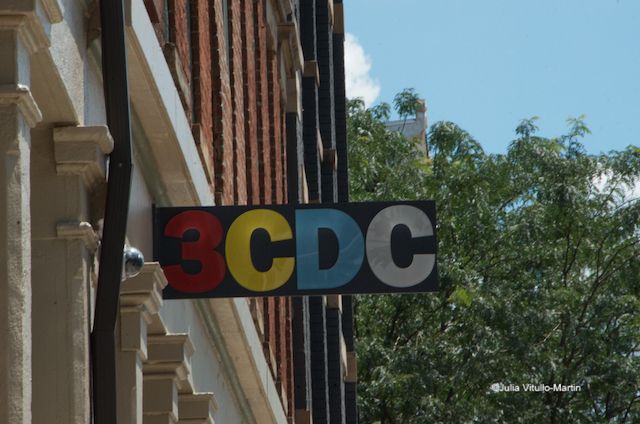
Yet two years later corporate executives and public officials combined to establish what has become the lead organization in Washington Park’s comeback, 3CDC, the Cincinnati Center City Development Corporation, formed to restore Over-the-Rhine. John Alschuler, the New York-based chairman of HR&A Advisors who developed Cincinnati’s 2003 Central City Plan, says, “Over-the-Rhine abuts the critical sources of Cincinnati’s economic energy and activity–and it had to be transformed. Washington Park was fundamental to that transformation because civic spaces define the tone and tenor of a community. Just as you couldn’t restore Midtown’s strength and integrity so long as Bryant Park was a heroin market, so you couldn’t make over OTR without restoring its signature open space to the standards of the community.”
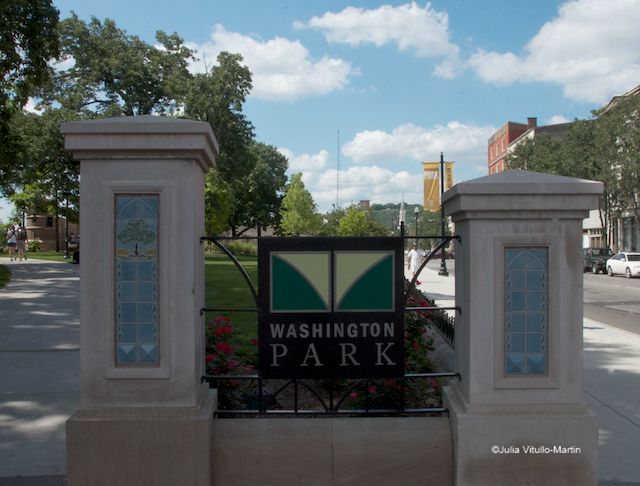
Today, $48 million later, those community standards are back, fully on display for anyone to see strolling the small but now fully used 8-acre space. How did they do it?
For years–certainly since the riots of 2001, but surely before as well–Washington Park was inhabited by vagrants, who held onto their territory partly by abusing others. The difference is that today they’re behaving well. Steve Leeper, president and CEO of 3CDC, which manages the park for the city, says, “We allow anyone in the park. We just ask them to behave. No open containers. No smoking in the vast majority of the park. We want to be welcoming to everybody, but we ask everyone to respect one another.”
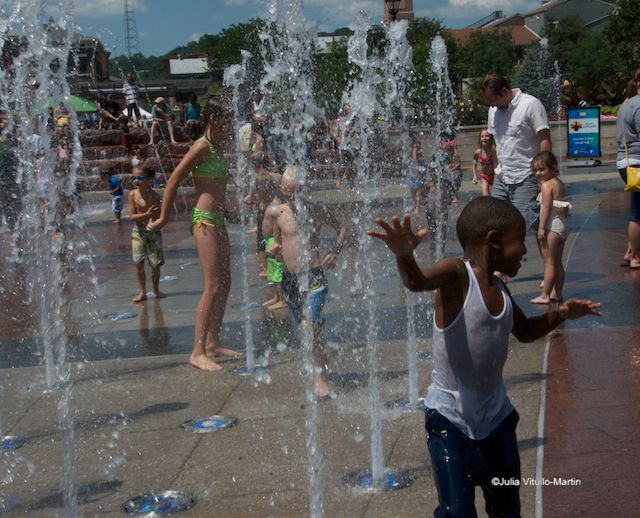
“We try to have activities going on simultaneously,” says Leeper. “The water feature for kids. Musicians in the band shell. On weekends a small market. Some nights a yoga session, the next night dance lessons, another night kickball. And a lot of passive recreation as well.” The best passive recreation may be sitting at what’s called the water feature–hilariously unpredictable but rather beautiful shooting fountains of water–and watching the deliriously happy children, many of whom stay for hours.
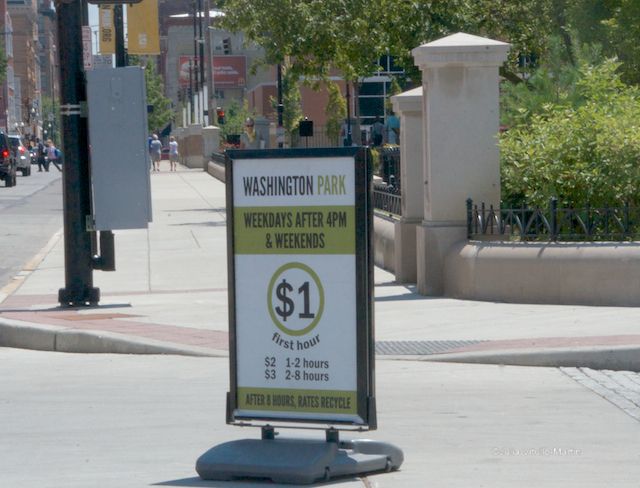
This will rankle those activists for whom parking is one of the great urban evils, but Cincinnati’s public transportation is poor, and many of the families coming to the park must drive. Maybe they’ll have a better option in an improved futuristic world, but right now they drive. Cheap parking both attracts families and provides 3CDC with an ongoing source of revenue to support the park, as well as pay its debt service. What’s more, the underground garage has a subdued entrance that in no way blights the neighborhood, while serving the public function of keeping cars off the residential streets. “We don’t want surface parking in a historic neighborhood,” says Leeper.
In the long run, if 3CDC’s strategy is successful, density will be the solution, as OTR is re-populated with residents, workers, business owners, and visitors. Then people will be able to walk to the park.
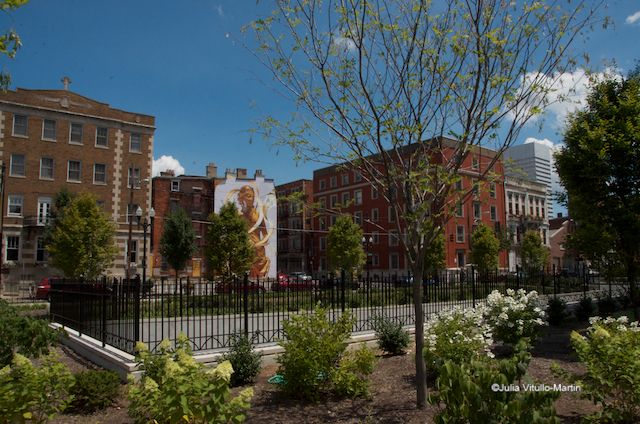
Washington Park has a small concession building owned by 3CDC, and a few excellent food trucks park on its borders. But basically, says Leeper, “We don’t have on-site food service because our strategy is to push people into the neighborhood. We want them to patronize local restaurants and services.” And, of course, OTR is a great food neighborhood in a great food city, so the strategy makes sense.
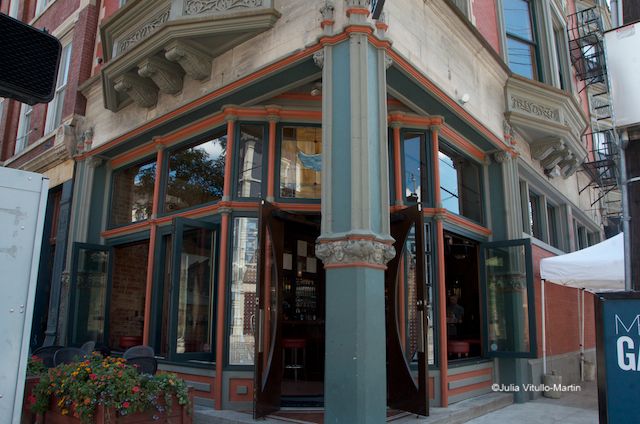
What matters ultimately is 3CDC’s physical and economic restoration of the neighborhood. “We’re probably a little more than halfway there,” says Leeper. Perhaps Reason Magazine should take another look. They may well have been correct about OTR’s dire state in 2001–which makes the current revival all the more impressive.
Julia Vitullo-Martin is a senior fellow at Regional Plan Association. Get in touch with her @JuliaManhattan.
Subscribe to our newsletter